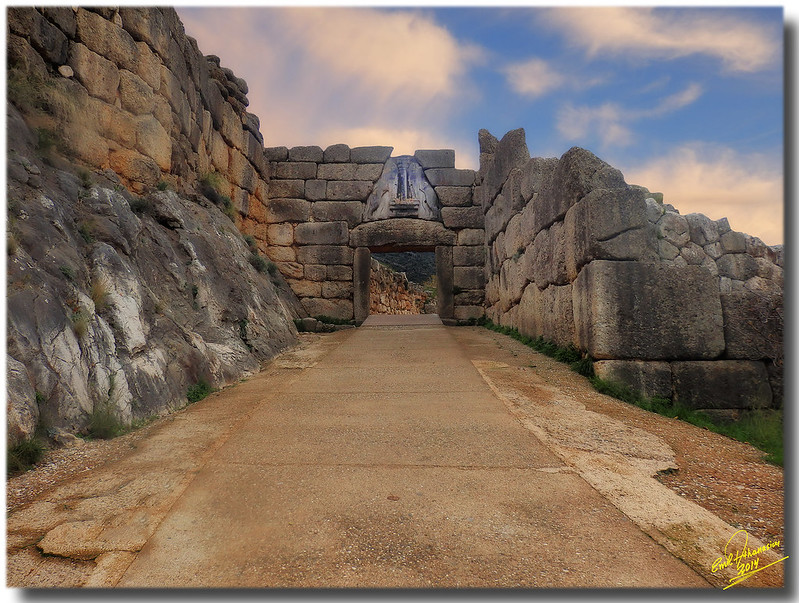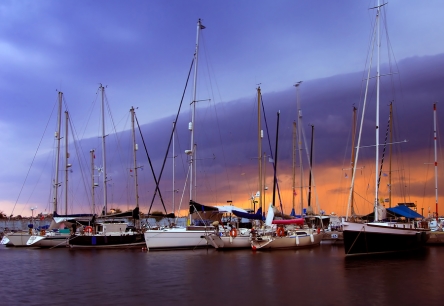- HOME
- Peloponnese
- Mystras
Mystras
The ruined Byzantine city of Mystras sits on the top and sides of a hill that juts out from the plain and is one of the most remarkable places in Greece. It's a UNESCO World Heritage Site.
A wander around this magical Byzantine city is a sheer delight. Its setting is spectacular, on a hill rising from a plain at the edge of the Taygetos Mountains, which thrust down into the Mani. Atmospheric ruins sprawl over the top and slopes of the hill, with enough remaining to give a good idea of what life must have been like for the 42,000 people who lived here in the 15th century.
The city was founded in 1249 by the Franks, who had taken control of Greece at the start of the 13th century. It owes its existence to Guillaume II de Villehardouin, who planned Mystras as the third of his strongholds in this region, the others being Monemvasia, and Tigani in the Inner Mani. He saw Mystras as a replacement for nearby Sparta, which lies in the plain.
Mystras fell to the Byzantines in 1262, but the new town that grew up in and around the fortress began to flourish. It developed as a notable centre of artistic excellence, attracting painters from as far afield as Italy and Constantinople (Istanbul).
Mystras' Two Entrances
There are two entrances to the site. Approaching from Sparta, you first come to the lower entrance. The second entrance is at the top of the hill, and both have parking. There is no particular advantage to either of them, although if you don't enjoy a lot of climbing you might want to explore the lower slopes first before driving to the top and then looking around there.
Whichever you choose, a map is essential and there's a decent one in the guide we recommend, the Bradt Guide to the Peloponnese. It's a real labyrinth and you can't explore it all without some doubling back.
Mystras: Mitropolis
If you begin at the bottom and turn right you come almost at once to the Mitropolis, the cathedral, which dates to 1309, making it the oldest church in Mystras. Inside are some 14th-century frescoes and, conspicuous on the floor, a stone with the Byzantine double-headed eagle carved into it. On this spot the man who was to become the last Byzantine emperor, Constantine XI Paleologus, was given the title of Despot of the Morea in 1443. He became emperor in 1449 and ruled until 1453.
Beyond the Mitropolis is the convent of Pantanassa, whose few remaining nuns are the only people still living in Mystras. They sell refreshments and their own handicrafts at busy times of the year. Not surprisingly, the church of this working convent is the best preserved in Mystras. Built in 1365, it was the last to be constructed in this walled hillside town.
Turn left at the bottom entrance to reach the Perivleptos Monastery. The church here has particularly fine 14th-century frescoes around the dome which, in accordance with Byzantine convention, carries an image of Christ Pantokrator (the Almighty or All-Powerful).
Mystras: Kastro
The dominant feature at the top of the site is the castle, or Kastro, though first you come to the Palace Chapel of Agia Sofia with its stunning marble floors. Below here it is possible to walk around the castle keep, which gives wonderful views over the ruined city. This dramatic spot is where the German writer and scientist Goethe (1749-1832) set the meeting between Faust and Helen of Troy in his famous play, Faust.
The Despots' Palace
In addition to the Kastro, there is also the Despots' Palace. The first Byzantine rulers here were the Despots of Morea, Morea being the name for this whole region of Greece. The palace has survived well over the centuries. One wing dates from the original Frankish days, and another was added in the 14th century.
This section includes a throne room that was used for the coronation of several Byzantine kings. The palace has been closed for extensive renovation for many years with no note of when it might re-open, though when it does it will certainly add even more glory to the remarkable site of Mystras.
Latest Posts
-
The Lesser-Known Traditions of Greek Easter
Step off the beaten path this spring and discover the enchanting — and often surprising — Easter traditions found across Greece. -
Easter in the Mystical Castle of Monemvasia
In the castle town of Monemvasia, with its dramatic medieval backdrop and sea views, Easter is a deeply spiritual and atmospheric experience. -
Sifnos: Greece’s Hidden Culinary Star on the Rise
Sifnos, a Cycladic island, is gaining fame for its rich culinary heritage, especially the beloved melopita honey-cheese tart. -
Easter in Leonidio: A Tapestry of Light, Culture and Cliffs
In Leonidio, Easter comes alive with handmade hot air balloons in the sky and lanterns made from bitter oranges in the streets. -
April 9 Strike in Greece to Impact Public Transport, Ferries and Air Travel
Transportation and travel across Greece will face disruptions on Wednesday, April 9, as public transport, ferry and aviation workers join a nationwide strike called by Greek labor unions. -
Ancient Theater of Lefkada Brought Fully to Light Following Systematic Excavation
The Greek Culture Ministry has announced that the first ancient theater ever identified in the Ionian Islands has recently been brought fully to light on Lefkada, revealing an impressive monument that… -
Seven Greek Traditions Recognized as Intangible Cultural Heritage
From traditional barrel-making to age-old folk dances, seven new entries on Greece’s National Inventory preserve the country’s living heritage for future generations. -
Greek Air Traffic Controllers to Hold 24-hour Strike, Disrupting Flights on April 9
The Hellenic Air Traffic Controllers Union have announced a 24-hour strike for Wednesday, April 9, in response to the protest called by the Civil Servants’ Confederation (ADEDY). The strike is being h… -
Ten Best Budget Hotels on Santorini
Greece Travel Secrets picks the ten best budget hotels on Santorini, some with caldera views, some near beaches and some close to the heart of Fira. -
No Ferries in Greece on April 9 as Seamen Join Nationwide Strike
The Pan-Hellenic Seamen’s Federation (PNO) has announced its participation in the 24-hour strike called by the General Confederation of Greek Labor (GSEE) on Wednesday, April 9. The strike, which will…
































